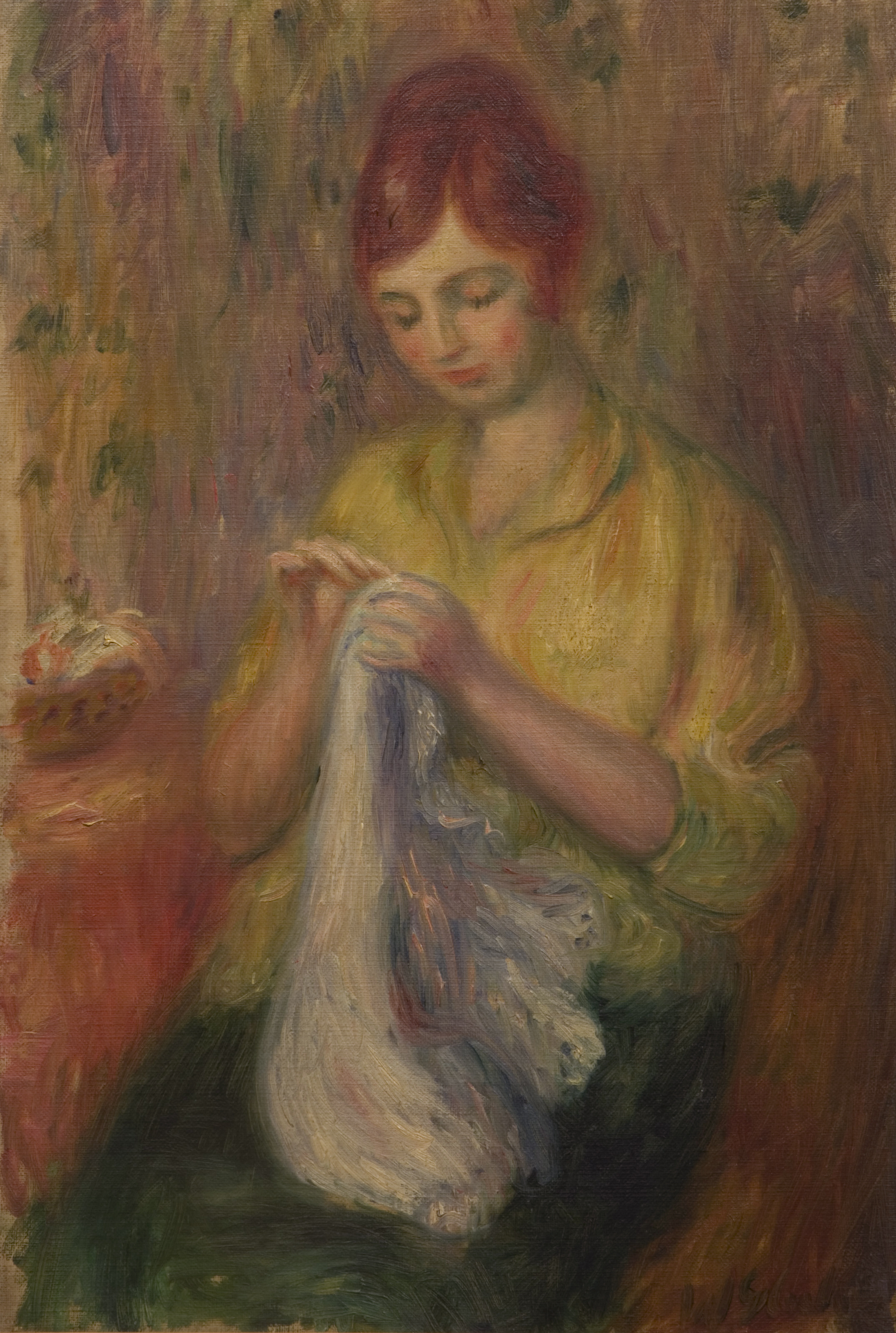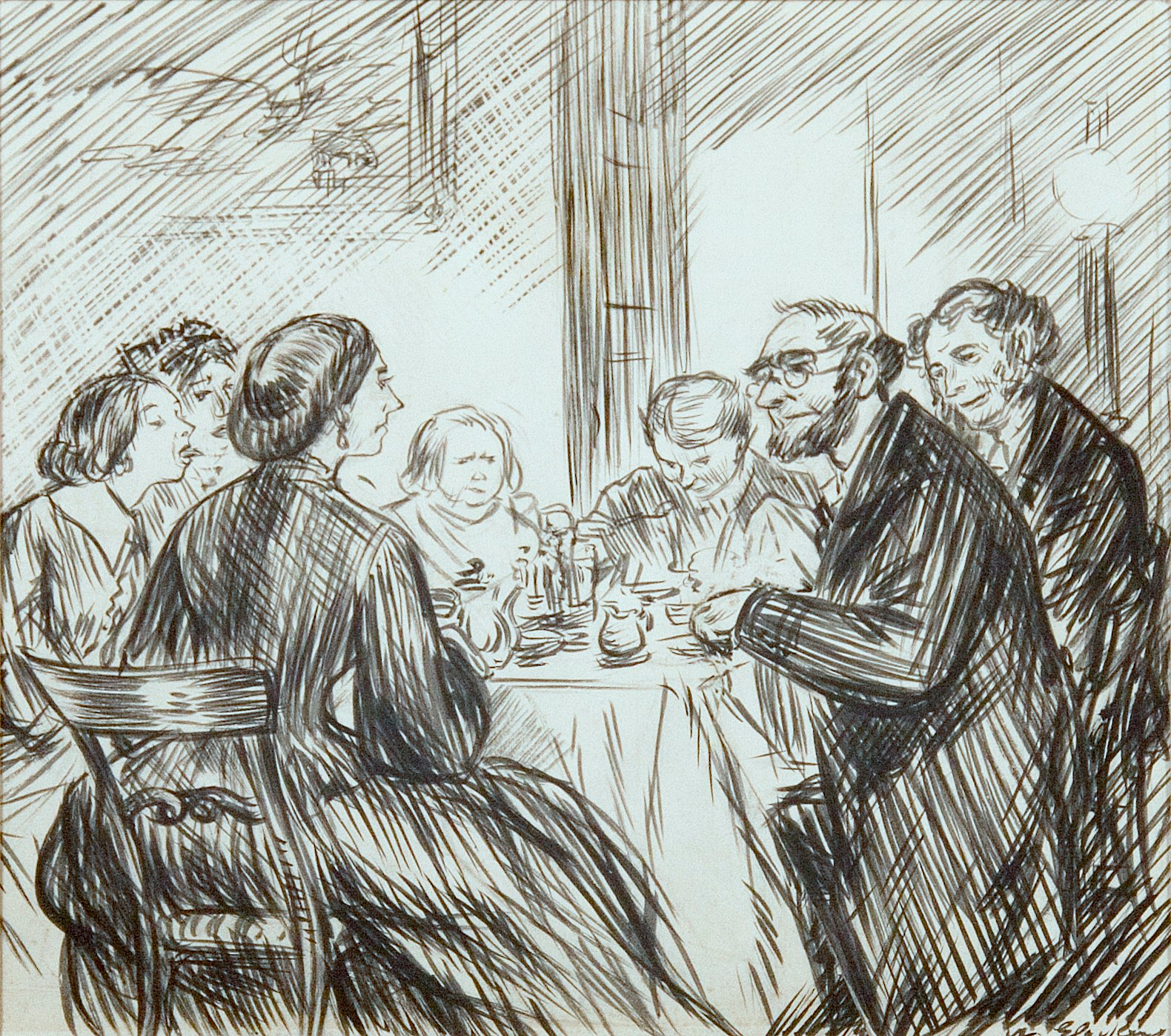William Glackens
William Glackens (1870-1938) was a newspaper and magazine illustrator, painter, and member of The Eight. His early canvases of middle-class leisure and entertainment underwent a major shift around 1910 from darker realism to Impressionist-inflected images, earning him the nickname “the American Renoir.” He was also instrumental in the development of the European Impressionist and Post-Impressionist collections at the Barnes Foundation. Of Glackens, affluent businessman Albert C. Barnes once said he “combines greatness as an artist with a big man’s mind.”
Born and raised in Philadelphia, Glackens attended Central High School alongside John Sloan and Albert C. Barnes, who would become lifelong friends. After graduating, he worked as a newspaper illustrator at the Philadelphia Record and the Philadelphia Press with Everett Shinn and George Luks, filling the role of what would eventually become photojournalists — in one oft-told story, Glackens shimmied through a window to get to a crime scene roped off by police only to end up standing in a pool of a victim’s blood.
In the evenings Glackens took classes at the Philadelphia Academy of Fine Arts, where he met Robert Henri, who in 1896 invited him on a trip to Paris. There Glackens painted urban scenes, tonally subtle but compositionally bold, bringing in influences from Whistler and Manet; while his illustration work had often focused on gritty scenes of poverty, his paintings leaned more towards portrayals of middle and upper class life. Crucially, Paris is where he encountered the art of the Impressionists, particularly Renoir, whose palettes would make an enormous mark on Glackens’s later works.
Glackens returned to New York City later the same year, setting up a studio in Greenwich Village while still working as an illustrator for publications like the the New York Herald, McClure’s, Cosmopolitan, and Harper’s Weekly. Gradually, though, printing photographs became an easier process, and the work of illustrator-reporters began to dry up. Glackens shifted his focus entirely to oil paint and pastels, exhibiting in the controversial 1908 exhibition with The Eight.
Around 1910 his art shifted out of what many refer to as his “dark” period to one of images that “blazed with…new and strange colors,” leading one critic to remark with some vitriol that he “threw his pots of black paint out the window and became a violent impressionist almost overnight.” Fleeting moments in Central Park, crowded street markets and department stores, and quiet interior scenes were favorite subjects of Glackens; the wit, rhythm, and gestures of the people who populated his images became his signature.
In 1912, Albert C. Barnes asked Glackens to travel to Europe and bring back the finest examples of painting he could find. Glackens returned with hundreds of works by Cézanne, Matisse, Renoir, and many others, forming the beginning of what is today the Barnes collection in Philadelphia. In 1913, Glackens served on the selection committee for the groundbreaking Armory Show.

